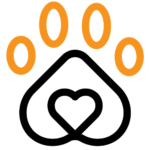Dog attacks can be sudden and terrifying, but they are often preceded by warning signs that many people overlook. Recognizing these signs can help prevent a potentially dangerous situation. Here are 18 warning signs that could lead to a dog attack, and why you shouldn’t ignore them.
1. Rigid Body Posture

When a dog becomes very still and rigid, it’s a clear sign of discomfort and potential aggression. This posture indicates the dog is on high alert and ready to react.
2. Intense Staring

Dogs that fixate and stare intensely are displaying a challenge. This prolonged eye contact can be a precursor to aggressive behavior.
3. Growling

Growling is a clear vocal warning that a dog is uncomfortable or feels threatened. Ignoring this warning can escalate to biting.
4. Baring Teeth

When a dog shows its teeth, it’s signaling aggression and warning you to back off. This can quickly turn into a bite if the dog feels provoked.
5. Raised Hackles

The hair on a dog’s back and neck standing up (raised hackles) is a sign of heightened arousal and can indicate fear or aggression.
6. Yawning

Yawning can be a sign of stress or discomfort in dogs. If a dog yawns repeatedly, it’s trying to calm itself down and might feel threatened.
7. Licking Lips

Frequent lip-licking can indicate anxiety or nervousness. This is often seen in dogs that are uncomfortable in their current situation.
8. Avoiding Eye Contact

When a dog avoids eye contact, it’s showing submission or fear. A fearful dog may bite if it feels cornered or threatened.
9. Tucked Tail

A tail tucked between the legs is a sign of fear. A frightened dog can become aggressive if it feels it has no escape route.
10. Ears Pinned Back

Dogs pin their ears back when they are scared or anxious. This is a clear sign that the dog is uncomfortable and might act out.
11. Snapping

Snapping is a dog’s way of warning you without making contact. If a dog snaps at you, it’s a clear sign that it could bite next.
12. Excessive Barking

While barking is normal, excessive or frantic barking can indicate a dog is feeling threatened or stressed.
13. Defensive Body Position

A dog that stands sideways or positions itself defensively is protecting itself and could be preparing to attack if it feels threatened.
14. Moving Away

If a dog moves away from you or tries to hide, it’s feeling scared or threatened. Forcing interaction can lead to defensive aggression.
15. Guarding Behavior

Dogs that guard their food, toys, or territory may react aggressively if they feel these resources are threatened.
16. Sudden Freeze

If a dog suddenly stops moving and becomes very still, it’s assessing the situation and could react aggressively if it feels threatened.
17. Dilated Pupils

Dilated pupils can indicate a high level of arousal, stress, or fear. A dog with dilated pupils might be ready to react defensively.
18. Rapid Breathing

Rapid, shallow breathing can be a sign of stress or fear. This physical sign indicates the dog is not comfortable and could become aggressive.
Don’t Ignore the Signs

Understanding and recognizing these warning signs can prevent dog attacks and ensure a safe interaction for both you and the dog. Always approach dogs with caution and respect their boundaries. By being vigilant and aware of these signs, you can avoid playing the victim and ensure a safer environment for everyone involved.
Featured Image Credit: Shutterstock / Lalam photography.
For transparency, this content was partly developed with AI assistance and carefully curated by an experienced editor to be informative and ensure accuracy.

